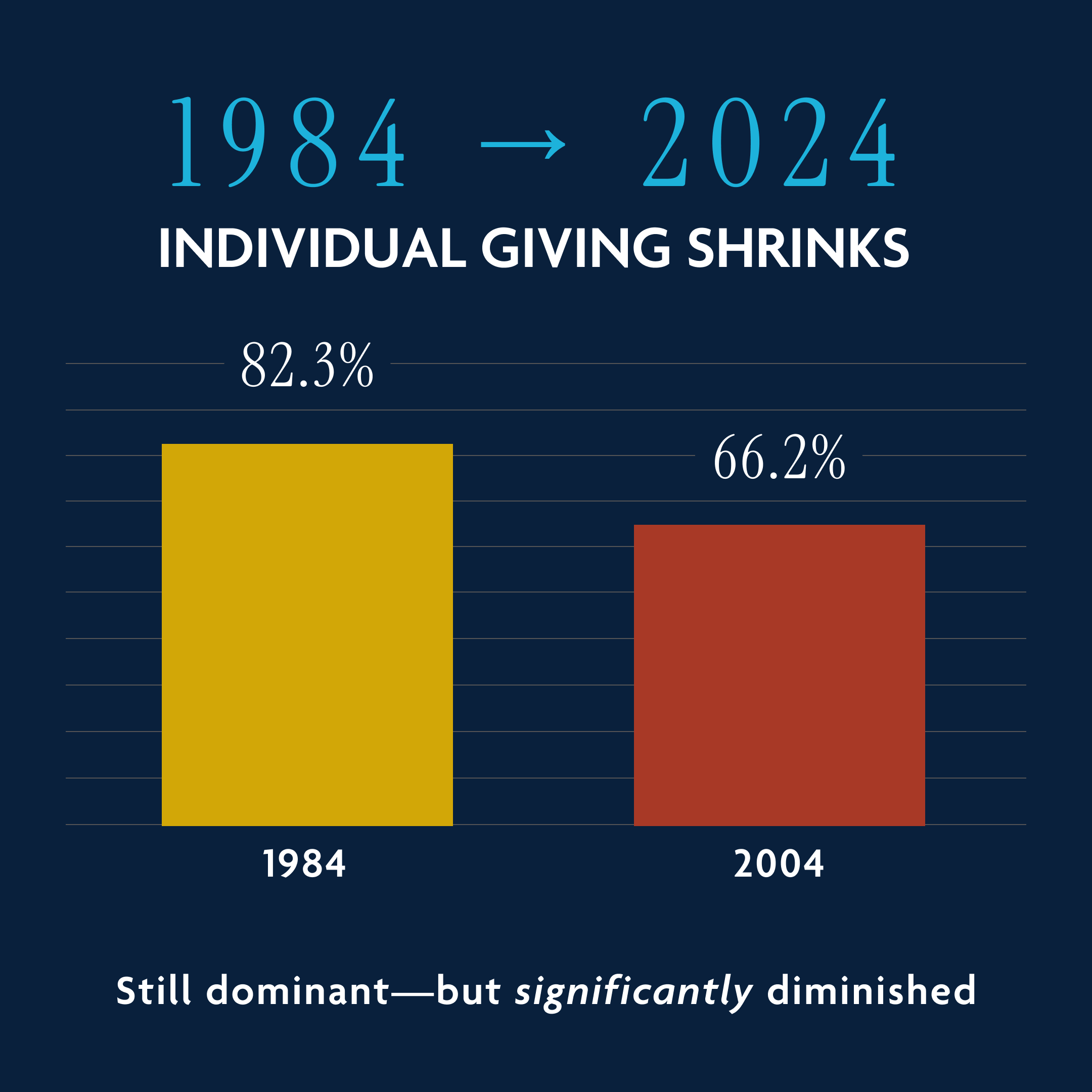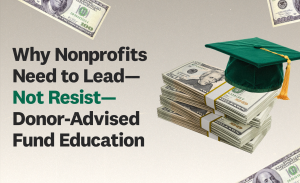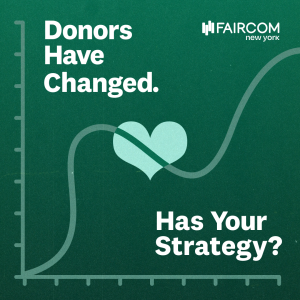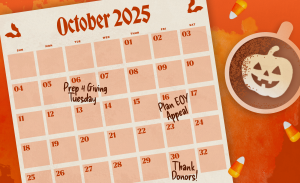Part 1 of Power, Priorities, and Philanthropy
Total giving is at record highs, rightfully a cause for celebration in our sector. But a deeper look at the data also shows something more profound: a decades-long shift in who is driving American philanthropy. Simultaneously, just as this transformation reaches a critical point, new federal legislation offers unprecedented tools to influence its direction.
The 2025 Giving USA report reaffirmed what long-term observers have called attention to repeatedly in recent years: a quiet power shift in philanthropy, but on its heels, the newly-signed One Big Beautiful Bill Act (OBBBA) introduces policy changes that could fundamentally alter this trajectory. This story isn’t just about generosity but rather about those who hold influence over where, how, and why private dollars are deployed to tackle our biggest challenges – and who gets to participate in those decisions.
In 1984, if you wanted to influence American charitable impact in society, you needed to convince millions of individual donors. Today, many organizations have shifted focus to zero-in on mega-donors and foundation program officers. But starting in 2025 – and even more in 2026 – could new federal tax provisions begin shifting this dynamic back toward broader participation?
For the first time in decades, we have legislative tools specifically designed to re-democratize giving – if we know how to use them.
The Numbers Behind the Shift
The transformation is stark when you examine four decades of data:
- In 1984, individual donors accounted for 82.3% of all giving.
- By 2024, individuals made up 66.2% of giving. Still dominant, but significantly diminished.
- Meanwhile, foundations surged from just 5.8% to 18.5% of total giving.
- Corporate giving has remained relatively stable, while bequests remain the most unpredictable source.
However, raw percentages only tell part of the story. When we track absolute dollars, individual giving grew nearly 7x over 40 years. On the other hand, foundation giving grew an astonishing 28x, fueled by new wealth, tax incentives, and the explosion of donor-advised funds (DAFs).
Perhaps most telling: mega-gifts from individual donors reached $11.72 billion in 2024 alone, demonstrating how ultra-wealthy donors are deploying foundation-scale resources through personal giving.
When the Shift Accelerated
This didn’t happen overnight. The 40-year timeline in this year’s Giving USA data set reveals how these sudden changes emerged from decades of structural evolution:
- 1990s Tech Boom: New wealth creation outside traditional channels generated fortunes that dwarfed previous generations, creating donors with foundation-scale resources but individual giving preferences.
- 2000s Foundation Model: The Gates Foundation’s strategic approach demonstrated how mega-philanthropy could tackle global challenges systematically, inspiring other ultra-wealthy donors to think in a way once seen only with major grantmaking institutions.
- 2010 Giving Pledge: Warren Buffett and Bill Gates formalized billionaire philanthropy commitment, institutionalizing the age-old principle that great wealth comes with great responsibility for societal impact.
- 2020s Convergence: DAFs and hybrid vehicles like LLCs democratized foundation-style giving, allowing sophisticated donors to operate with institutional rigor while maintaining individual flexibility.
These inflection points reveal how we landed where we are today, in a philanthropic market that is in many ways more strategic and more concentrated than ever before.
The Rise of Institutional Philanthropy
The most dramatic indicator of this shift is the ratio of individual-to-foundation giving. In 1984, the ratio stood at 14.3:1. By 2024, that ratio shrunk to 3.6:1.
This shift represents more than dollars, casting a spotlight on a fundamental change in philanthropic power dynamics. Ultra-wealthy individuals increasingly operate through private foundations or hybrid structures. Foundations wield greater influence on nonprofit priorities, sector standards, and funding conditions. Philanthropy has become more strategic, metrics-driven, and professionalized – but also more concentrated.
This convergence means today’s donors – whether individuals or institutions – expect both personal connection and foundation-level accountability.
Real-World Implications
The concentration of giving creates profound changes in how philanthropy operates:
- Barrier Creation: Rising donor sophistication requirements can exclude smaller, grassroots organizations from major funding conversations, even when they’re most connected to community needs.
- Democratic Deficit: Fewer voices are setting charitable priorities for more societal resources, potentially disconnecting philanthropic decisions from broader community input. For example, a few hundred foundation program officers can now influence priorities for nearly 20% of all charitable dollars, while mega-donors drive strategic decisions for billions more.
- Organizational Adaptation: Nonprofits increasingly design programs for foundation preferences and sophisticated donor expectations rather than community-identified needs.
- Professional Evolution: Development teams need both relationship-building skills for individual cultivation and analytical capabilities for institutional fundraising – a hybrid skillset that’s essential but not widely available.
How Policy & Practice Could Work Together to Re-Democratize Philanthropy
While these trends reflect long-term structural shifts, the combination of new policy tools and intentional organizational strategies offers unprecedented opportunity to restore balance and broaden participation. The future of philanthropy isn’t just about how much we raise – it’s about how we raise it and who gets to participate.
Leveraging New Policy Tools
- High–Net Worth Incentive to Act Now: High-net worth donors may accelerate giving in 2025 to avoid the new 0.5% AGI floor and reduced deduction cap (35% vs. 37%) starting in 2026. Encourage them to consider strategic gifts in 2025 to maximize benefits before new thresholds take effect
- Universal Deduction Strategy: The 90% of taxpayers who take the standard deduction will be able to deduct charitable gifts up to $1,000 (individuals) or $2,000 (married couples) in 2026. Begin educating donors about the new benefit now with “Did You Know” messaging for year-end appeals, emphasizing that gifts, no matter the level, may soon be eligible for this tax-saving opportunity.
- SALT Cap Opportunity: The increase from $10,000 to $40,000 will encourage more households to itemize, particularly in high-cost states. Target messaging to donors who may return to itemizing, particularly those in the $1,000-$10,000 giving range – the incredibly valuable mid-level audience – who lost tax incentives in 2017.
- Corporate Partnership Evolution: The 1% AGI minimum for corporate deductions could drive strategic increases in business philanthropy. Position your organization as a strategic partner for companies navigating the new floor, emphasizing multi-year impact and measurable outcomes.
Strengthen Small-Dollar Giving
- Make recurring giving central. Monthly gifts are among the most accessible on-ramps to philanthropy.
- Elevate participation rates as a KPI alongside revenue to measure success by engagement, not just dollars raised.
- Integrate small-dollar impact levels across all channels to frame $10–$25 gifts as essential, not optional.
Expand Digital Access and Personalization
- Use digital acquisition (paid social, search, SMS) to reach younger and more diverse donor groups.
- Optimize omnichannel giving experiences across mail, email, SMS, social, website, and mobile. Use QR codes, dynamic content, and mobile-first design to simplify giving.
- Leverage first-party data to personalize messaging across preferred channels, gift history, and digital behavior.
Rethink Messaging and Storytelling
- Shift from transactional asks to identity-based messaging. Replace “support us” with “join us.”
- Center stories on community impact and shared values, not just institutional achievements.
- Spotlight collective impact. Highlight cumulative results (e.g., “Together, donors like you made X possible”) over major donor spotlights.
- Celebrate first-time donors and use ambassador models to decentralize influence.
Align Internal Teams
- Break down silos between direct marketing and relationship fundraising teams.
- Cross-train staff to build both relationship-building and analytical skillsets.
- Share unified dashboards to coordinate marketing and major donor pipelines for integrated cultivation.
Advocate for Sector-Wide Change
- Support policies that broaden participation, like a universal charitable deduction for non-itemizers.
- Advocate for DAF payout minimums to accelerate the release of charitable dollars into the sector.
The Re-Democratization Opportunity
The new OBBBA provisions offer a rare chance to reverse the concentration trend. The universal charitable deduction alone could engage millions of donors who’ve been priced out of tax-advantaged giving since 2017. Historical precedent supports this: during the CARES Act period (2020-21), about 90 million taxpayers took advantage of a similar deduction, contributing an estimated $30 billion to charity.
However, policy alone won’t automatically restore balance. Organizations must act intentionally to leverage these new incentives for broad-based engagement rather than simply boosting existing donor segments.
Every organization, every fundraising professional, every policy maker has the opportunity to shape philanthropy’s future.
Organizations that proactively work to democratize philanthropy while still engaging sophisticated donors effectively will build more sustainable, legitimate, and impactful operations. This isn’t a choice between efficiency and democracy. Instead, the future of American philanthropy depends pursuing both.
Up Next: In Part 2, we examine whether the record-breaking 2024 giving totals represent lasting structural change or a fleeting “Goldilocks” moment driven by unique economic and crisis conditions – and how to tackle your strategy accordingly.
What concentration patterns are you seeing in your donor file and relationships? How is your organization working to maintain community voice amid increasingly sophisticated donor expectations? We’d love to hear how these trends are playing out in your fundraising work – and determine how we can tackle this new landscape together!



